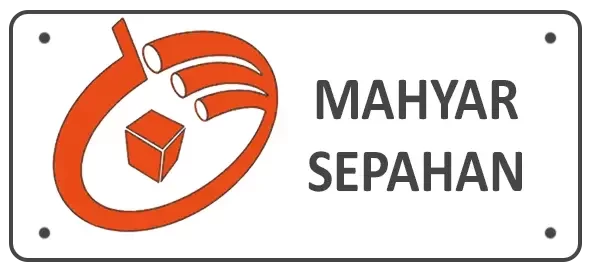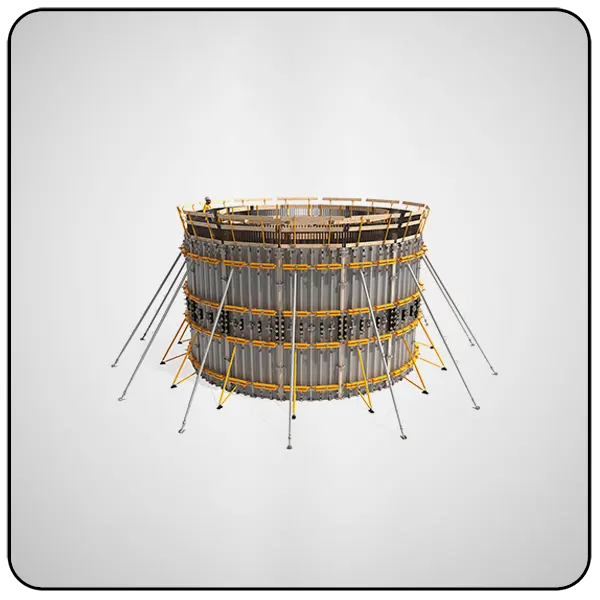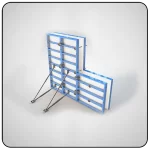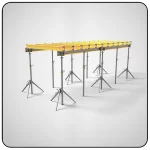Plywood Formwork is one of the most popular and widely used building molds in the construction industry. These Formworks are made of quality and resistant wood and are used in various constructions due to their beauty and high performance. In this article, we will examine the features, advantages, and disadvantages of plywood forms, how to use them and their impact on the construction process. Join us to travel to the world of plywood Formwork in this interesting and important way.
What is plywood Formwork?
Content list
Plywood Formwork are mold that are made of 3-layer board and are used in the process of making concrete structures. These Formworks are used in many construction projects due to their unique features such as resistance, flexibility, and reusability. Structurally, plywood Formworks include beams, columns, and panels that are combined together to form the final form. These molds make concrete to be poured on them in a precise and smooth manner, and as a result, buildings of high quality and strength are produced.
Plywood molds are flexible due to adjustable connections and since the molding of some structures cannot be done using Modular Formwork Did. Therefore, a special mold should be designed for that structure. Special Formworks are usually designed and made for surfaces with irregular shapes, curves, and irregular angles.
In the design of this special mold, load and deformation criteria should be calculated. These panels are designed and made for round and polished structures where concrete needs smooth surfaces. These panels are flexible due to the adjustable connections, and by using them, diameters of 3 meters and above can be molded. The advantage of this system is its flexibility in the work and the calculation of various required curves, which makes it possible to use these “Curved Surfaces Plywood Formwork” .
Features of plywood Formwork
Plywood Formworks are among the modern and efficient solutions in construction. These Formworks are made of plywood, which is used in many construction projects due to its unique properties. In this article, we will examine the features of plywood Formwork.
- High resistance: Plywood wood has high resistance to pressure and tension, which makes plywood molds suitable for building concrete structures with high strength.
- Flexibility: Plywood wood has high flexibility and as a result, plywood molds can adapt to different shapes and dimensions.
- Light and portable: Plywood Formworks are light and portable due to the use of wood in the structure, which makes them very easy to transport.
- Reusability: Plywood Formworks are reusable, thus reducing construction costs, and due to the use of wood, they are also recyclable, which ensures minimal environmental impact during their disposal.
- Strong and stable structure: Plywood formwork has a strong and stable structure. This feature is very important in creating environments that are suitable for continuous and long-term use. The stable construction of these molds ensures that they are resistant to erosion and time.
- Customization: These templates are easily customizable. Customers can use the size, and design according to their needs and on curved surfaces as well.
- Flexibility in design: Plywood Formwork has flexibility in design. This feature allows architects and designers to create outdoor spaces with diverse and creative designs using these products.
Due to these features, plywood Formwork are used as a modern and efficient solution in the construction of buildings. As a result, using these templates increases productivity and reduces costs in the construction industry.
Applications of plywood Formworks
Due to its unique features, plywood forms are known as a modern and efficient solution in building construction. By using these templates, construction projects can be done quickly, cost-effectively, and with high quality. In the following, we will discuss some of the applications of these formats.
- Construction of concrete structures: Plywood Formwork is a good choice for building concrete structures with high strength. Due to their high resistance to pressure and tension, these molds can withstand heavy loads and can be reused.
- Construction of concrete walls and curtains: Plywood formwork due to their high flexibility, have the ability to make concrete walls and curtains of different sizes and shapes. These templates can easily be changed into unique shapes according to the needs of the project.
- Construction of concrete substructures: Plywood forms are an excellent choice for the construction of concrete substructures such as columns, foundations, and balconies. These molds, using plywood, can withstand heavy loads and can be easily installed and replaced.
- Construction of roofs and bridges: Plywood Formwork is suitable for the construction of concrete roofs and bridges due to their high resistance to pressure and tension. These molds, using advanced technology, have the ability to build large and complex structures.
By using plywood forms, construction projects can be done quickly, with high quality, and at the lowest cost. This modern and efficient solution has been considered a smart choice in the construction industry.
Examining the advantages and disadvantages of these types of Formwork
Advantages:
The main goal of any construction project is to do it quickly, with high quality, and at the lowest possible cost. Plywood forms, as a modern and efficient solution in the construction industry, achieve these goals well. In the following, we discuss some of the advantages and disadvantages of using plywood formwork in construction.
- Efficiency and construction speed: One of the obvious advantages of plywood molds is high efficiency and construction speed. These templates can be easily installed and replaced due to their unique design and special features. Also, by using advanced technology, it is possible to produce forms at high speed and carry out the project efficiently and optimally.
- High flexibility: plywood formwork, due to their high flexibility, have the ability to build structures with different dimensions and shapes. These templates can be easily changed and adjusted and can be transformed into unique shapes according to the needs of the project. This possibility gives architects and designers a good opportunity to create unique and creative structures.
- High resistance to pressure and tension: plywood forms have high resistance to pressure and tension due to the use of high-quality wood and advanced production processes. This feature makes the molds capable of bearing heavy loads and can be used in the construction of concrete structures with high strength.
- Reusability: One of the important advantages of plywood formworks is their reusability. Due to the high resistance of the molds against pressure and tension and the use of quality materials, these molds can be reused many times. This feature significantly reduces the costs of molds and, as a result, the overall cost of the project.
Considering the above advantages, the use of plywood forms in construction as a smart and modern solution is highly recommended. These molds, by combining efficiency, construction speed, flexibility, and high resistance, can help improve performance and reduce project costs. But like any other construction method, they also have some disadvantages. Here are some of these disadvantages:
Disadvantages:
- High initial costs: Plywood formwork requires a high initial investment. Quality wood is expensive to make these molds and also has more complicated manufacturing processes than traditional molds. This can increase the overall cost of the project.
- Need for regular maintenance and repairs: Plywood molds require regular maintenance and repairs due to the use of wood. Wood may be damaged due to contact with moisture and water, pollution, and insects. Therefore, to maintain the useful life of molds, special attention and care is needed.
- Limitations in dimensions and shapes: Plywood formwork has high flexibility, but still, there are limitations in dimensions and shapes. Due to the use of wooden molds, the production of large molds with complex shapes may have limitations. This issue may create limitations in some projects.
- More time and labor: Plywood formworks require more time and labor to install and replace than metal or plastic molds. Due to the high weight of the molds and the need for technicians to install and adjust, these molds may take more time and require more labor.
Considering these disadvantages, engineers and architects should fully consider the advantages and disadvantages when using plywood formworks and make a correct decision.
Comparison of types of templates
In the following, I present a comparison table between plywood molds, plastic molds, and metal molds. This table will help you compare the advantages and disadvantages of each type of template.
| Attributes | Plywood molds | Plastic molds | Metal molds |
|---|---|---|---|
| Recyclability | Yes | Yes | Yes |
| Use of renewable natural resources | Yes | No | No |
| The weight of the form itself | style | style | Heavy |
| Resistance to different weather conditions | medium | medium | Top |
| Need to maintain | medium | less | less |
| Cost of production | medium | Top | medium |
| Useful life span | medium | medium | Top |
| Possibility of customization | Yes | Yes | Yes |
| Flexibility in design | Yes | Yes | limited |
| environmental effects | less | Top | Top |
| energy consumption | less | medium | Top |
| Water consumption | less | medium | Top |
Note that choosing the type of template is related to the project’s needs, environment, and financial constraints. Each type of format has its own characteristics and advantages, and you should be careful in choosing the right one, for this reason, it is recommended to contact the expert experts of Mahyar Sepahan Profile for free advice and the best offer to buy plywood formwork from Iran.
Key Points in Choosing and Using Plywood Formwork:
- Select the appropriate thickness: The thickness of the formwork should be chosen based on the type of structure, concrete pressure, and the number of times the formwork will be used.
- Use suitable facing: The formwork facing should be made of high-quality and waterproof material to prevent concrete from sticking to the formwork.
- Maintenance and repair: Plywood formwork should be thoroughly cleaned and dried after each use and stored in a suitable location.
- Inspection and supervision: Before each use, the formwork should be thoroughly inspected and repaired if any defects are found.
- Use proper equipment: Suitable equipment should be used for the installation and relocation of plywood formwork to prevent damage to the formwork.
Mehyar Profile Sepahan: Manufacturer and Supplier of High-Quality Plywood Formwork:
Mehyar Profile Sepahan, with a proven track record in the production and supply of various construction formwork, is proud to offer its customers the finest and highest quality plywood formwork. Using high-quality raw materials and advanced equipment, the company produces plywood formwork in various thicknesses, dimensions, and shapes.
Advantages of Using Mehyar Profile Sepahan Plywood Formwork:
- High quality: The use of high-quality raw materials and advanced equipment in the production of formwork significantly increases its quality and service life.
- High diversity: The production of formwork in various thicknesses, dimensions, and shapes fully meets the diverse needs of construction projects.
- Reasonable price: Offering formwork at competitive and reasonable prices benefits customers and contractors.
- After-sales service: Providing after-sales service and technical support to customers assures them of the quality and performance of the formwork.
In addition to the above advantages, using Mehyar Profile Sepahan plywood formwork offers other benefits, including:
- Reduced construction costs: The reusable nature of the formwork considerably reduces formwork-related expenses in construction projects.
- Increased construction speed: Easy installation and relocation of the formwork expedite the construction process.
- Creation of smooth and polished surfaces: Using plywood formwork produces smooth and polished concrete surfaces, minimizing the need for finishing and smoothing.
- Reduced concrete waste: Precise formwork connections minimize concrete waste.
- High safety: Using plywood formwork enhances worker safety on the construction site.
Considering the aforementioned advantages, using Mehyar Profile Sepahan plywood formwork is highly recommended as a modern and efficient solution in the construction industry.
Differences Between New and Old Plywood Formwork:
New plywood formwork offers numerous advantages over traditional formwork, some of which are highlighted below:
Quality and service life:
- The use of high-quality raw materials and advanced equipment in the production of new formwork significantly enhances their quality and service life.
- New formwork is more resistant to various weather conditions and moisture due to the use of new and more durable facings, resulting in a longer lifespan.
Diversity:
- New formwork is available in various thicknesses, dimensions, and shapes, meeting the diverse requirements of construction projects.
- There is a possibility of producing custom formwork based on project requirements.
Price:
- Despite the higher quality and service life, the price of new formwork is competitive and reasonable due to the optimization of the production process.
After-sales service:
- New formwork manufacturers provide robust after-sales service and technical support, ensuring customer satisfaction with the quality and performance of the formwork.
Efficiency:
- New formwork is easier to install and relocate, contributing to faster construction times.
- Precise connections in new formwork minimize concrete waste.
- Using new formwork creates smooth and polished concrete surfaces, minimizing the need for finishing and smoothing.
Safety:
- New formwork has been improved in terms of safety, reducing the risk of accidents on the construction site.
In addition to the above, new formwork is also environmentally friendlier, generating less waste.
Key Differences Between New and Old Plywood Formwork:
Here are some key examples of the differences between new and old plywood formwork:
| Feature | New Formwork | Old Formwork |
|---|---|---|
| Material | High-quality wood, durable facings | Medium-quality wood, weaker facings |
| Service life | 5 to 10 uses | 2 to 3 uses |
| Variety | Various thicknesses, dimensions, and shapes | Limited thicknesses and dimensions |
| Price | Competitive and reasonable | Higher total cost due to shorter service life |
| After-sales service | Strong and guaranteed | Weak and limited |
| Efficiency | Easy installation and relocation, less concrete waste, smooth and polished surfaces | More difficult installation and relocation, more concrete waste, need for finishing and smoothing |
| Safety | Enhanced | Higher risk of accidents |
| Environmental waste | Less | More |
Considering the above differences, the use of new plywood formwork is highly recommended as a modern and efficient solution in the construction industry.
Frequently Asked Questions – Mehyar Profile Sepahan Plywood Formwork
Application
What are the applications of plywood formwork?
- Construction of high-strength concrete structures
- Building concrete walls and curtains with various dimensions and shapes
- Construction of concrete substructures such as columns, foundations, and balconies
- Construction of roofs and bridges
Price
What factors affect the price of plywood formwork?
- Thickness of the formwork
- Dimensions and shape of the formwork
- Type of facing
- Number of uses
- Market conditions
Ordering
How can I order plywood formwork?
- Through the Mehyar Profile Sepahan website: www.mahyarsepahan.com [نشانی وب نامعتبر برداشته شد]
- By calling: +98 912 118 0029
- In person at the company office
Warranty
Is there a warranty for Mehyar Profile Sepahan plywood formwork?
Yes, Mehyar Profile Sepahan plywood formwork comes with a quality and after-sales service warranty.
Delivery
How is plywood formwork delivered?
Formwork is delivered in person or via freight to anywhere in the country.
Consulting
Is it possible to receive a free consultation on choosing the right type of formwork?
Yes, Mehyar Profile Sepahan experts are ready to provide free consultation to customers on choosing the right type of formwork based on their project needs.
Training
Does Mehyar Profile Sepahan offer training on how to install and use the formwork?
Yes, Mehyar Profile Sepahan holds training courses on how to install and use the formwork.
Safety
What are the safety tips when using plywood formwork?
- Use safety equipment such as a helmet, gloves, and glasses.
- Do not use damaged formwork.
- Follow safety precautions when installing and moving formwork.
- Do not overload the formwork.
Environment
What is the environmental impact of plywood formwork?
Plywood formwork has a lower environmental impact than some other formwork due to its use of renewable materials and recyclability.
What is Plywood Formwork?
Plywood formwork are molds made of plywood sheets that are used in the process of constructing concrete structures. They provide a temporary shape and support for the concrete until it sets and gains enough strength to stand on its own.
Advantages of using Mehyar Profile Sepahan Plywood Formwork:
- High quality: The use of high-quality raw materials and advanced equipment in the production of molds significantly increases their quality and service life.
- High variety: The production of molds in various thicknesses, dimensions, and shapes fully meets the different needs of construction projects.
- Reasonable price: Providing molds at competitive and reasonable prices.
- After-sales service: Providing after-sales service and technical support to customers.
Disadvantages of using Plywood Formwork:
- High initial cost: They require a high initial investment.
- Need for regular maintenance and repair: Due to the use of wood, they require regular maintenance and repair.
- Limitations in dimensions and shapes: Despite their flexibility, there are limitations in very large or complex dimensions and shapes.
- More time and labor: Compared to some metal or plastic formwork, they require more time and labor for installation and replacement.
What to consider when choosing plywood formwork:
- Suitable thickness of the formwork depending on the type of structure, concrete pressure, and number of uses.
- Use of a suitable and high-quality facing to prevent concrete from sticking to the formwork.
- Proper maintenance and repair after each use (cleaning, drying, proper storage).
- Complete inspection and supervision before each use to ensure no defects.
Mehyar Profile Sepahan Company
What are the services of Mehyar Profile Sepahan Company?
- Production and supply of various high-quality plywood formwork.
- Consulting on choosing the right type of formwork.
- Design and construction of special formwork.
- Training on how to install and use the formwork.
- After-sales service and technical support.
Other Frequently Asked Questions
Are plywood formwork waterproof?
To some extent, yes, but to increase water resistance, waterproof coatings can be used.
What is the maximum height that can be concreted with plywood formwork?
The maximum concreting height depends on the thickness of the formwork, the type of concrete, and the weather conditions.
Can plywood formwork be used on curved surfaces?
Yes, with the use of special and flexible formwork, they can also be used on curved surfaces.



